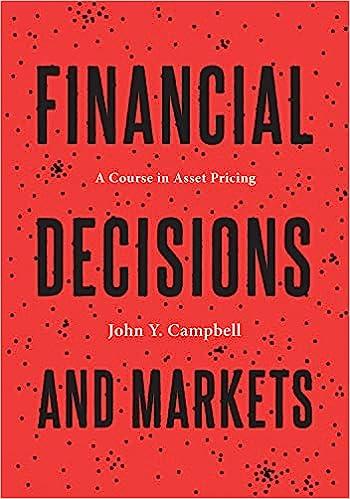Question
6. Assume that there are two risk-averse investors, i and k, whose absolute risk aversions satisfy R(z) R(z), V z. There is a risky

6. Assume that there are two risk-averse investors, i and k, whose absolute risk aversions satisfy R(z) R(z), V z. There is a risky asset and a risk-free asset. Assume that at the risk premium, rp = E()r, >0, individual i invests all his wealth in the risky asset. Show that at this risk premium, individual k may either invest all his wealth in the risky asset or even take a leveraged position, i.e., he may invest more than his wealth at the risky asset by borrowing at the risk-free rate.
Step by Step Solution
There are 3 Steps involved in it
Step: 1

Get Instant Access to Expert-Tailored Solutions
See step-by-step solutions with expert insights and AI powered tools for academic success
Step: 2

Step: 3

Ace Your Homework with AI
Get the answers you need in no time with our AI-driven, step-by-step assistance
Get StartedRecommended Textbook for
Financial Decisions And Markets A Course In Asset Pricing
Authors: John Y. Campbell
1st Edition
0691160805, 978-0691160801
Students also viewed these Finance questions
Question
Answered: 1 week ago
Question
Answered: 1 week ago
Question
Answered: 1 week ago
Question
Answered: 1 week ago
Question
Answered: 1 week ago
Question
Answered: 1 week ago
Question
Answered: 1 week ago
Question
Answered: 1 week ago
Question
Answered: 1 week ago
Question
Answered: 1 week ago
Question
Answered: 1 week ago
Question
Answered: 1 week ago
Question
Answered: 1 week ago
Question
Answered: 1 week ago
Question
Answered: 1 week ago
Question
Answered: 1 week ago
Question
Answered: 1 week ago
Question
Answered: 1 week ago
Question
Answered: 1 week ago
Question
Answered: 1 week ago
Question
Answered: 1 week ago
Question
Answered: 1 week ago
View Answer in SolutionInn App



